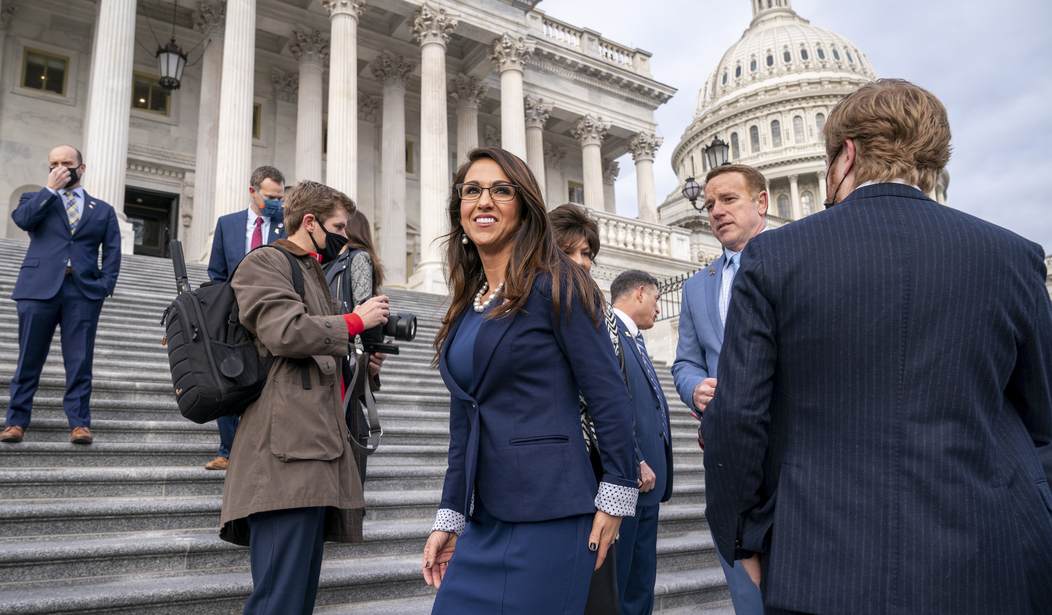One of my favorite questions to ask those in the 2A community is “what made you become a gun owner?” Everybody’s story is different; some folks may have grown up in a gun-owning household, while others came to embrace their Second Amendment rights after they were the victim of a violent crime. Millions of Americans became gun owners for the first time last year, and each and every one of them had their own reasons for doing so.
For Lauren Boebert, the firebrand freshman congresswoman from western Colorado, it was an incident outside of her restaurant in Rifle, Colorado that made her start to think more about the right of armed self-defense.
Boebert, a strong supporter of gun rights who went viral after releasing a campaign-style video vowing to “carry my Glock to Congress,” often tells the story of a man who was beaten to death outside of her restaurant.
She claimed that after witnessing the man’s killing, she wondered how she could protect herself and her patrons, eventually allowing her staff at Shooters Grill in Rifle, Colorado to serve customers with open-carry firearms.
Boebert told the story again on the House floor Wednesday during a debate on a bill that might expand background checks on those purchasing guns.
“There was an altercation outside my restaurant where a man was physically beat to death, there were no weapons involved, he was beat to death by another man’s hands,” she said, referring to the 2013 incident outside her restaurant, later adding, “I have a lot of young girls who work in my restaurant and we needed an equalizer.”
After Boebert’s floor speech, the Washington Post‘s Glenn Kessler decided that he would fact check her story rather than, you know, actually fact check any of the claims of Democrats that their universal background check bill would actually prevent criminals from obtaining firearms. Lo and behold, Kessler discovered that, while there had indeed been a fight outside of Boebert’s restaurant and one of the people involved died a short time later, the autopsy report revealed that drugs were listed as the cause of death, not the injuries received in the assault.
Police opened a homicide investigation after Green was found dead.
“He had been in a fight and he died,” said Rifle Police Chief Tommy Klein. “They investigated from day one as a homicide.”
But as investigators interviewed witnesses and collected evidence, the possibility of murder quickly appeared remote. Green had a gash on the head, but that appeared to be from a fall. There were no obvious injuries to his abdomen. In his pocket, he was carrying a glass pipe that was filled with the residue of methamphetamine.
Witnesses had said Green had run several blocks after the altercation but police searched the area and found no blood or other evidence of a deadly fight.
Finally, the autopsy report, written by forensic pathologist Robert Kurtzman less than two weeks after Green’s body was found, concluded that Green died of “methamphetamine intoxication.” Kurtzman noted that “postmortem examination of the decedent revealed superficial abrasions consistent with a fall. The abrasions were not associated with any internal injury,” whereas “methamphetamine is known to cause sudden death and abnormal behavior.” (The toxicology report showed Green’s methamphetamine level was 1900 nanograms per milliliter, which is quite high.) Kurtzman said the death was accidental — the “unintentional consequence of habitual drug abuse.”
“That’s it in a nutshell,” Klein said. “No one was charged with homicide in that case.”
So, the investigation started out as a homicide investigation, but police eventually concluded that it was drug overdose death. Kessler seems to ignore the possibility that Boebert never learned the cause of death, and that the fight itself was what caused her to start thinking about the safety of herself and her employees. The WaPo fact-checker also takes issue with Boebert’s description of the fight taking place outside of her business, since the attack took place a few blocks away.
Boebert often recounts that the fight took place “outside her restaurant.” But that’s not correct, either, according to police records. They show that the fight took place near the corner of First Street and East Avenue, which is about three blocks from Shooters Grill. Green started running up East Avenue, before turning left into an alleyway past the town library that took him to Railroad Avenue, where he collapsed in front of an abandoned Timberline store.
A 2018 Denver Post article on Shooters Grill, headlined “Armed and Ready to Feed You,” described how “a man was beaten to death in a nearby alley.” The restaurant’s previous location had backed onto the alley that Green ran through. But that’s not same thing as the fight taking place just outside.
Amazingly, Kessler gives Boebert’s story “three Pinocchios” and calls it a tall tale. Perhaps Boebert was unaware of all of the details of the investigation, which makes sense given the fact that she was a restaurant owner and not a police officer, but Kessler’s not going to give her the benefit of the doubt. Instead, he makes it seem like she just made all of this up and couldn’t have been impacted in any way by Green’s death.
So much for “believe all women.” When it comes to why they value their right to keep and bear arms, Kessler and the rest of the anti-gun media are there to cast doubt and throw shade. Kessler may think that Boebert’s story is worth three Pinocchios, but his column’s pegged out my Bullsh*t-O-Meter at 100%. Now that he’s fully investigated Boebert’s claims, however, maybe he can turn his attention to the lies peddled by the supporters of universal background checks that their bill would prevent violent criminals from getting their hands on guns.









Join the conversation as a VIP Member